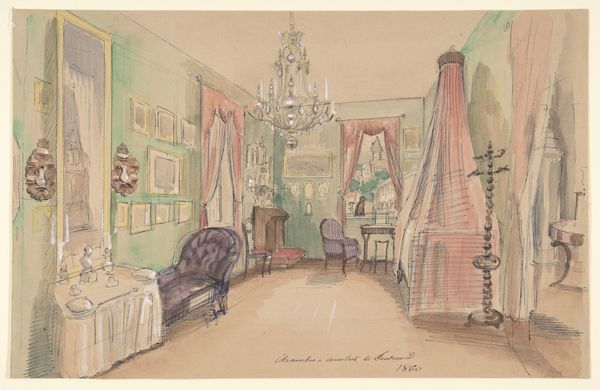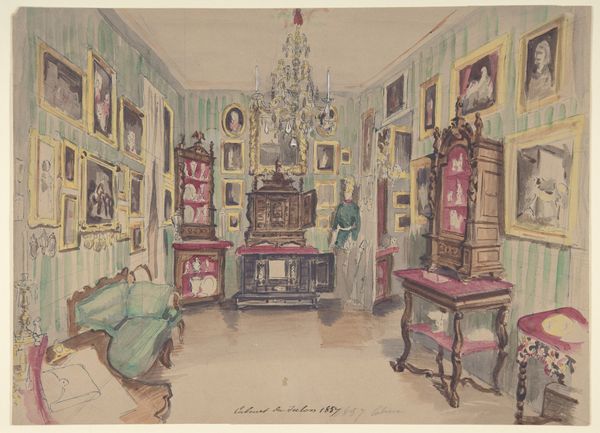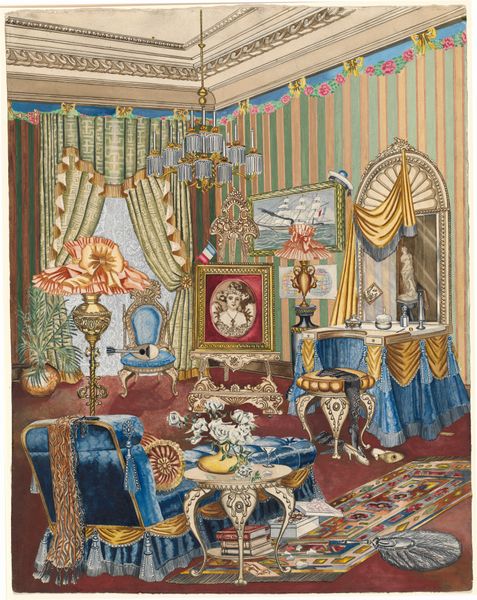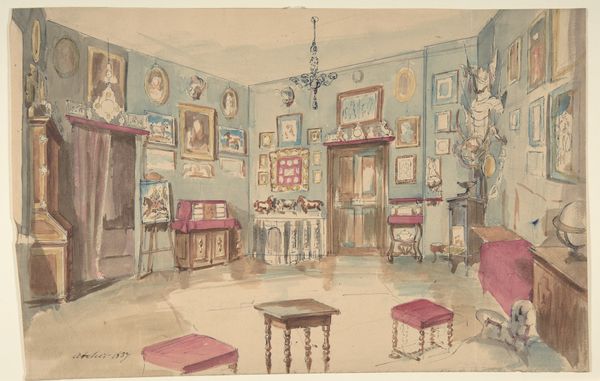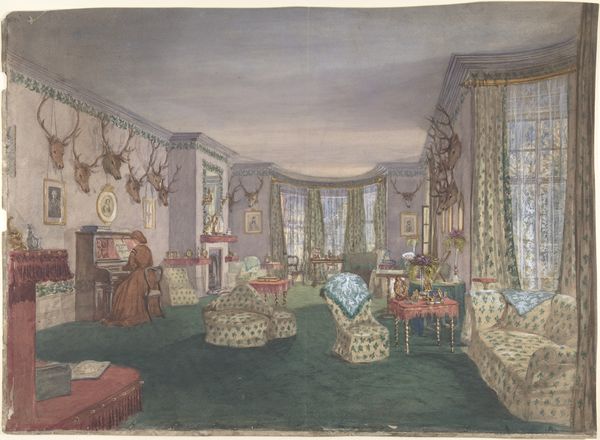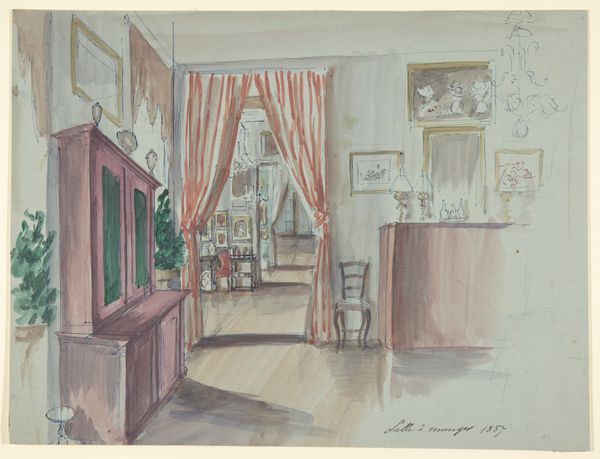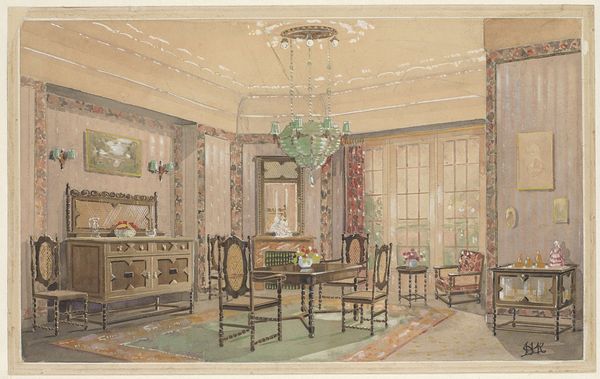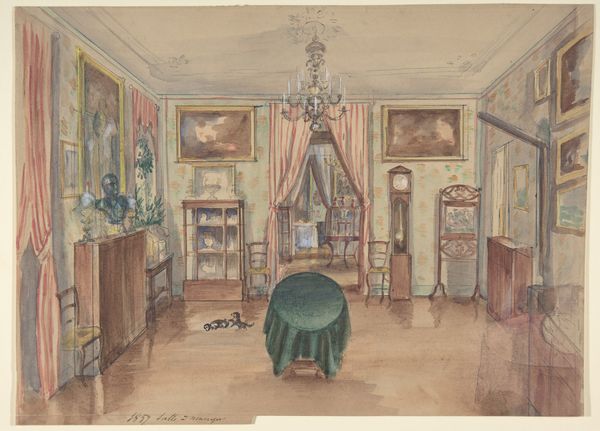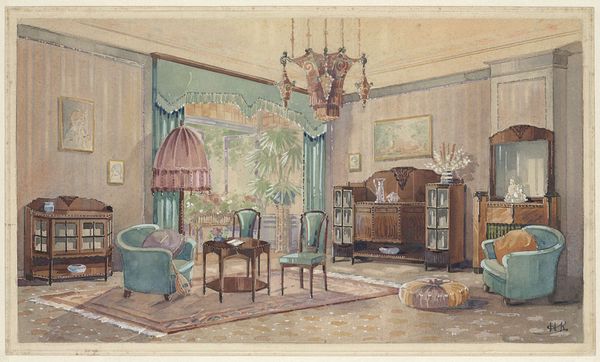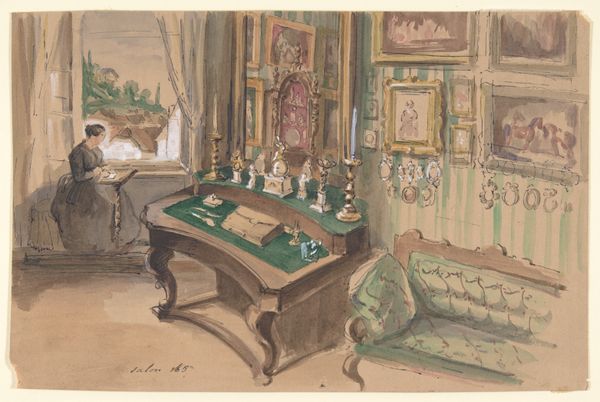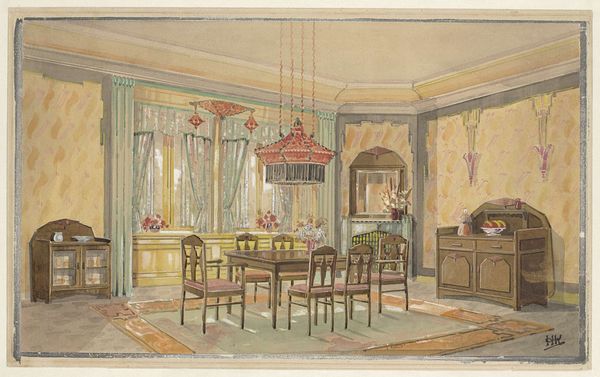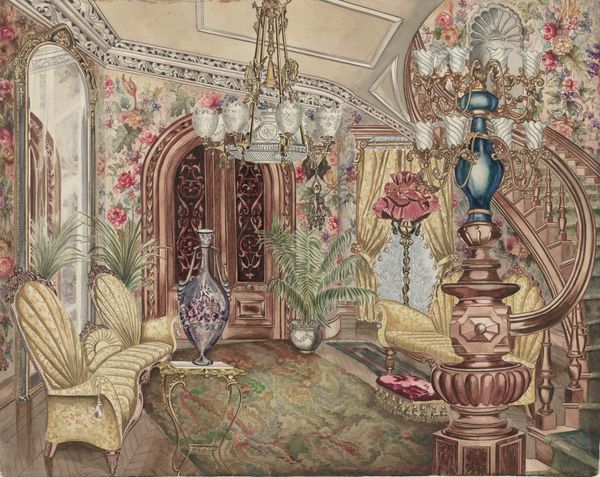
Dimensions: sheet: 8 9/16 x 11 9/16 in. (21.7 x 29.3 cm)
Copyright: Public Domain
Curator: Let's turn our attention to a watercolor and graphite drawing titled "Drawing of an Interior: Salon," created in 1857 by an anonymous artist. It's part of the Metropolitan Museum of Art's collection. Editor: Immediately, the subdued, almost melancholic palette strikes me. The mauves and grays create a very hushed atmosphere. There is something quite intimate and yet formally restrained about this scene. Curator: The historical context here is fascinating. The salon, as depicted, was more than just a room; it was a stage for performing societal roles, especially for women. The artist's anonymity perhaps speaks to the constraints placed upon female artists during that period, their visibility often mediated or erased. This drawing, with its attention to interiority, seems to question those limitations. Editor: Yes, but look closely at the composition itself. The light filters through the sheer curtains, subtly illuminating the objects arranged within the room. The perspective lines draw your eye across the space, settling on that lone figure by the window. Note the balance of shapes: rectangular mirrors, circular tabletops. The drawing operates according to careful visual structures, using shape and shadow. Curator: And the woman at the window. Is she contemplating the world outside, or is she trapped within these confines of wealth and privilege? Considering that the mid-19th century was a time of burgeoning social movements, particularly regarding women’s rights, her ambiguous posture could be read as a silent form of resistance, or maybe simple isolation. Editor: Maybe she is reading a novel. We should resist the temptation to read the figure only through the context. She might as well admire the arrangement of objects in the garden. I think it is much simpler, in reality. What are we to say of those mirrors? What purpose do they serve? Curator: It's difficult to separate art from the circumstances in which it was created. Consider how anxieties surrounding identity, class, and gender played out in these spaces. The artist captures the domestic sphere as a site of both comfort and constraint, echoing the societal expectations placed upon women of that era. Editor: That’s an interesting avenue to take, though I find more power in the intrinsic aesthetic values of the piece itself: how the delicate strokes capture the soft texture of the textiles, how light infuses itself into every surface. Curator: It offers a glimpse into their world. It also challenges us to confront enduring questions about identity, freedom, and representation. Editor: A perfect piece for us to consider more closely then. A fine and quiet piece, even.
Comments
No comments
Be the first to comment and join the conversation on the ultimate creative platform.
